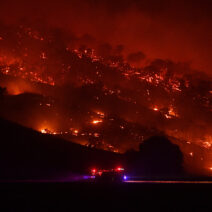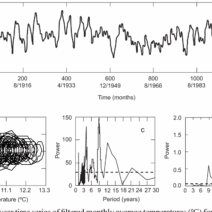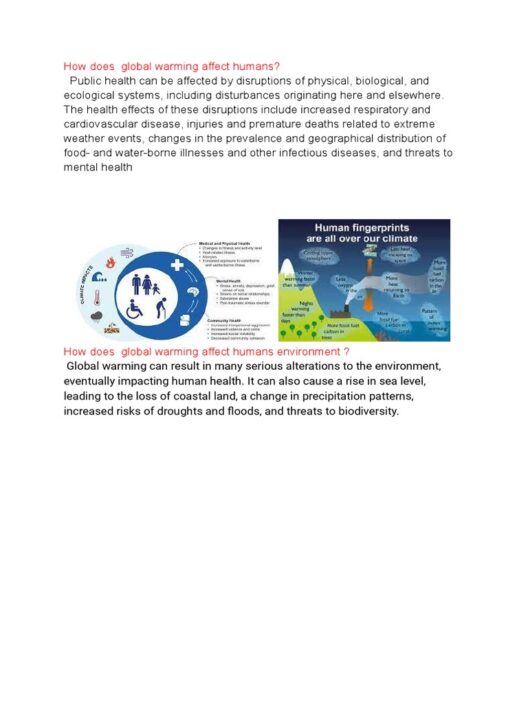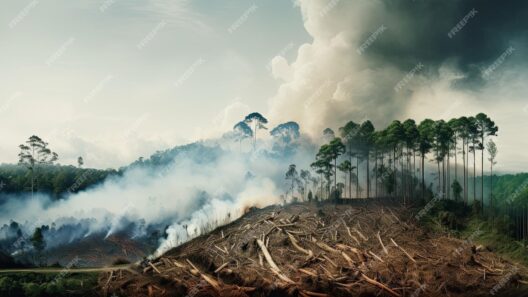The intricate dance of climate chemistry resembles the delicate symphony of a well-tuned orchestra, where each instrument plays a crucial role in the overarching melody of our world. Understanding this chemistry is imperative in our collective battle against climate change. It encompasses various elements, processes, and interactions that dictate the health of our planet.
At the heart of climate chemistry lies the composition of the Earth’s atmosphere. Dominated by nitrogen (78%) and oxygen (21%), the remaining 1% is a mélange of gases, including argon, carbon dioxide (CO₂), methane (CH₄), and nitrous oxide (N₂O). This minute concentration is deceptive; even slight fluctuations in these trace gases can dramatically alter our climate.
The Role of Greenhouse Gases
Think of greenhouse gases as the globe’s thermal blanket. While they are indispensable for sustaining life by trapping heat from the sun, human activities have exacerbated their concentrations. Since the dawn of the Industrial Revolution, the atmospheric burden of CO₂ has surged dramatically, primarily due to fossil fuel combustion, deforestation, and various industrial processes. This excess of CO₂ is akin to a blocked radiator, preventing the Earth’s natural heat from radiating back into space. As a result, the global thermostat continuously rises.
Methane, which is over 25 times more effective than CO₂ at trapping heat in the short term, emerges from agricultural practices such as enteric fermentation in ruminants, as well as landfills and oil extraction. Its potency is both a curse and a call to action. The extraction of raw natural resources is challenging. Our dependency on fossil fuels presents a daunting paradox: our immediate needs push us towards practices that spell doom for future generations.
Next, nitrous oxide—a gas with much lower emissions but also alarming potential—joins the fray. Released from agricultural fertilizers and industrial processes, it boasts a warming potential that is approximately 298 times greater than CO₂ over a century. This illustrates the profound impact that seemingly small quantities of potent gases can have on atmospheric chemistry.
The Chemical Reactions Driving Climate Change
It is essential to grasp the chemical reactions that underpin these processes. The combustion of fossil fuels initiates a cascade of reactions. For instance, when hydrocarbons combust, they combine with oxygen to produce CO₂, water, and energy. In simpler terms, this reaction transforms fossilized sunlight into the energy that powers machinery while inadvertently throttling the Earth’s climate.
This combustion also releases pollutants, including carbon monoxide (CO) and sulfur dioxide (SO₂). These byproducts do not simply vanish; they interact dynamically within the atmosphere. SO₂ can react with water vapor to form sulfuric acid, creating acid rain—a phenomenon with devastating effects on ecosystems and infrastructure alike.
The Ocean: A Carbon Sink
The oceans, which once acted as an effective carbon sink, absorbing about 30% of anthropogenic CO₂ emissions, are now stretching under the weight of excess carbon. As they absorb increased quantities of CO₂, they also experience a decline in pH levels, leading to ocean acidification. This transformation is like a slow poison for marine life, particularly for organisms such as corals and shellfish that rely on calcium carbonate. Their existence is tied intricately to the oceanic chemistry, showcasing an unfurling web of life that is presently under threat.
Biogeochemical Cycles and Feedback Loops
Understanding the biogeochemical cycles—especially the carbon, nitrogen, and phosphorus cycles—is essential to comprehending climate chemistry. Each cycle acts like a grand stage where various actors interact, sometimes resulting in feedback loops that amplify climate change. For instance, as temperatures soar, permafrost thaws, releasing methane previously trapped within. This feedback loop creates an inexorable cycle of warming, prompting a sense of urgency to mitigate climate change.
The Role of Climate Models
To foresee the future, scientists employ climate models that simulate these intricate chemical interactions. By incorporating data from various sources and running countless simulations, they can project potential outcomes based on current emissions trajectories. These models serve as scientific crystal balls, albeit imperfect ones. The intricate variables make precise predictions elusive, yet they highlight the importance of immediate action to curb emissions.
Innovative Solutions on the Horizon
While the narratives of doom can be disheartening, innovative solutions herald a new era of environmental stewardship. Carbon capture and storage (CCS) technology represents a flicker of hope. By capturing CO₂ emissions at the source and sequestering them underground, we can mitigate the impact of industrial processes on the atmosphere. Additionally, reforestation and sustainable agriculture can sequester carbon naturally, restoring balance to fractured ecosystems.
Conclusion
The climate chemistry weaved into the very fabric of our Earth bears a profound significance that extends beyond mere numbers and graphs. It is a tapestry of interactions, consequences, and possibilities. As we stand at a pivotal point in our climatic trajectory, understanding this chemistry is no longer a mere academic exercise but an essential prerequisite for informed action. If we wish to rewrite the current narrative of climate change, we must embrace our role in this grand oratorio, adjusting our instruments to play harmoniously for the sake of our planet and its future. Unraveling the enigma of climate chemistry is not just an academic pursuit; it is a profound ethical imperative.








